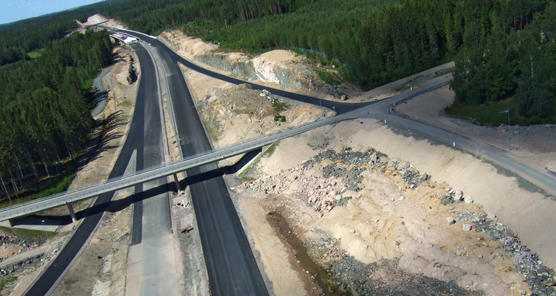Press release 2015-08-10 at 11:40

© Vesa Kuusava
Environmental impacts of land use have been widely assessed in recent years. In particular, carbon footprints of food and bioenergy production have been studied. Environmental impact assessments are used in decision-making of public authorities, industry and individuals. Surprisingly, environmental impacts of land use have been underestimated in the majority of the life cycle assessment studies, according to the recent study.
Choosing the reference state is critical
Land is required for various types of human actions, such as for food, feed, bioenergy and fiber production. In practice, all human actions including land use have an impact on the environment.
In the study, an extensive search of international literature was carried out. Roughly 700 life cycle assessment studies based on systematic selection criteria were reviewed and analysed in terms of their use of land-use reference state, which is a very critical methodological choice in life cycle assessment. Most often, the reference state was not considered at all, or was chosen to describe the current land use.
“In other words, agricultural land was assumed to remain agricultural land, and forest remaining an unchanged forest”, tells the Lead Author of the study, Researcher Sampo Soimakallio from Finnish Environment Institute (SYKE).
“However, land ecosystems are dynamic, and thus don’t function this way. Neither of the above mentioned reference states does consider the fact that land use for human purposes prevents the natural regeneration of the land towards its natural state”, Soimakallio explains. For example, occupying land for agriculture or wood plantation prevents natural reforestation in many areas, thus resulting in foregone carbon sequestration.
Assessment procedure should be adjusted
In general, the choice of land-use reference state has been considered to be arbitrary. The new study concludes that this is not true.
“The environmental impacts of land use can be coherently described only if the land-use reference state is natural regeneration”, says Soimakallio. The natural biomass production capacity of land depends among others on climatic conditions and land quality. In order to value the use of various types of land appropriately, the environmental impacts of land use has to be assessed coherently. This way the environmental impacts of various land uses can be compared to each other.
“For example, a managed forest is more close to the natural state than agricultural land cleared from forest. Despite of this, the concept of so called carbon debt is typically raised only when taking about the use of forest biomass, not the agricultural biomass”, Soimakallio says.
Adjustment of the assessment procedure would be necessary to aid in preparing coherent strategies for example for land use and energy production.
The study has been funded by Maj and Tor Nessling Foundation, and carried out in international collaboration.
Study:
Soimakallio, S., Cowie, A., Brandão, M., Finnveden, G., Ekvall, T., Erlandsson, M., Koponen, K., Karlsson, P.-E: Attributional Life Cycle Assessment: is a land-use baseline necessary? The International Journal of Life Cycle Assessment.
Link to the study:
Study published online on August 5, 2015: DOI: 10.1007/s11367-015-0947-y.
More information:
Doc., D.Sc. (Tech.) Sampo Soimakallio, Finnish Environment Institute SYKE, tel. +358 295 525 1830, firstname.lastname@ymparisto.fi